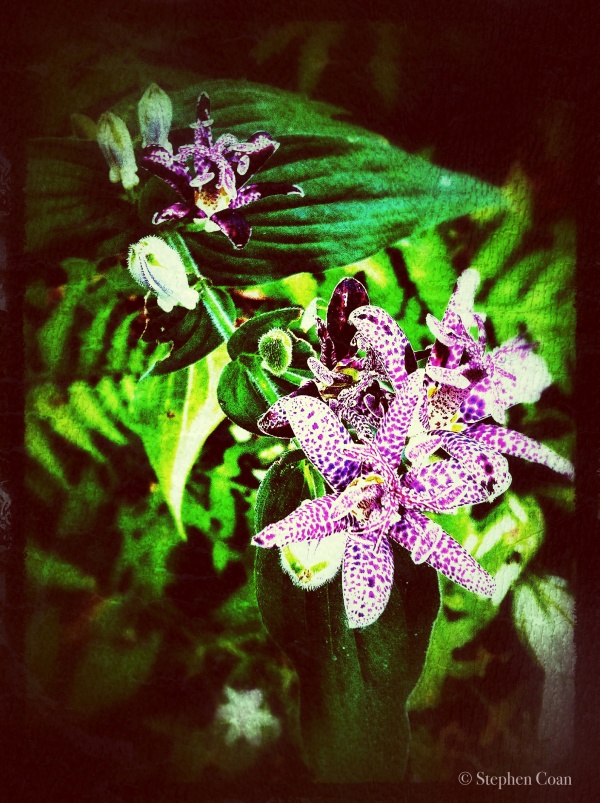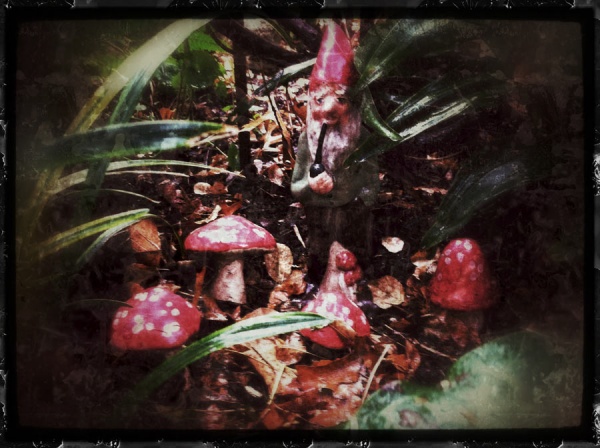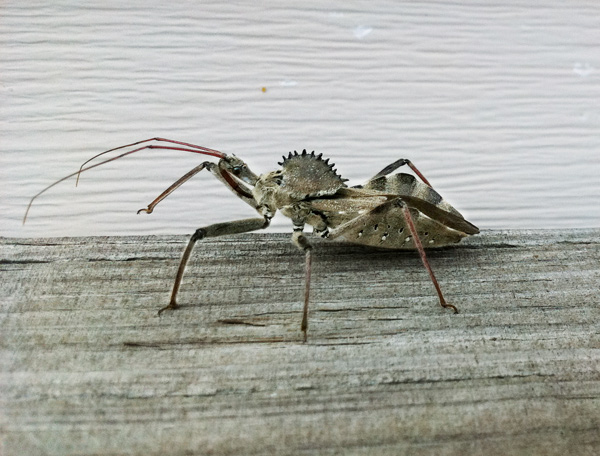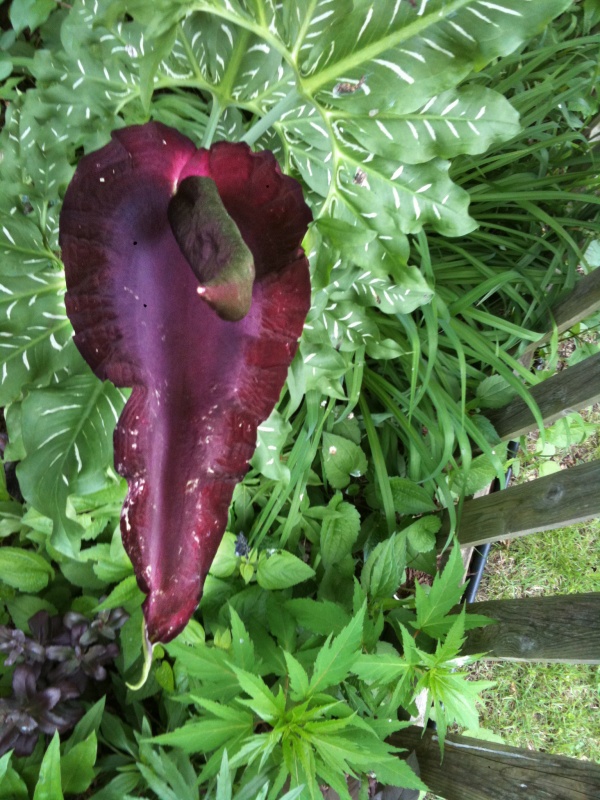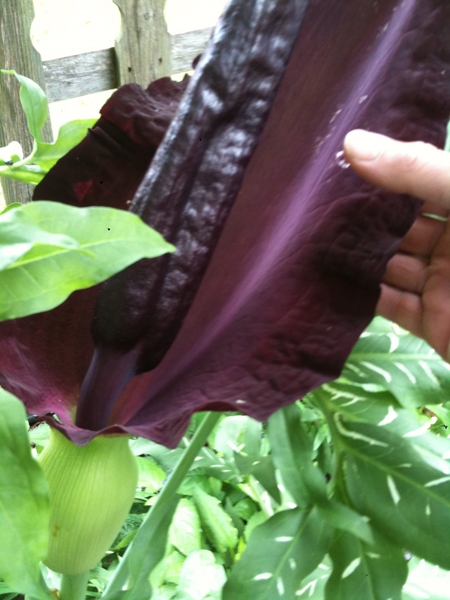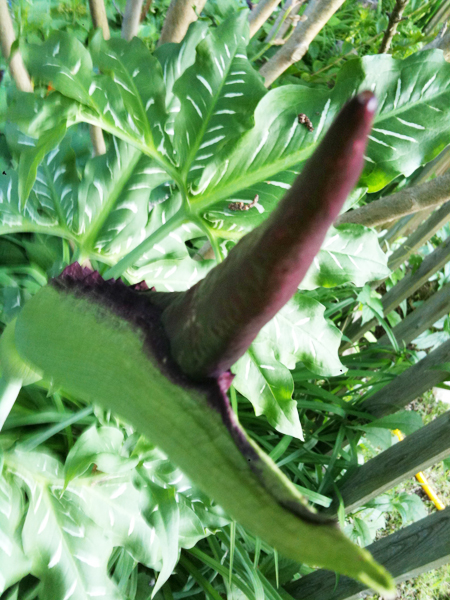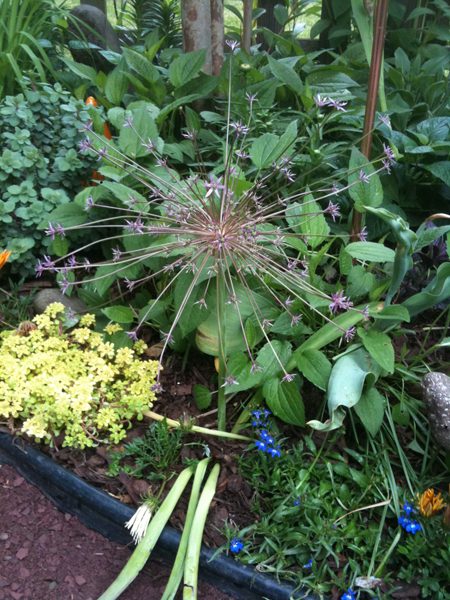| |
|
|
| |
 |
January 17th, 2018
|
|
Award Winning Designer |
 |

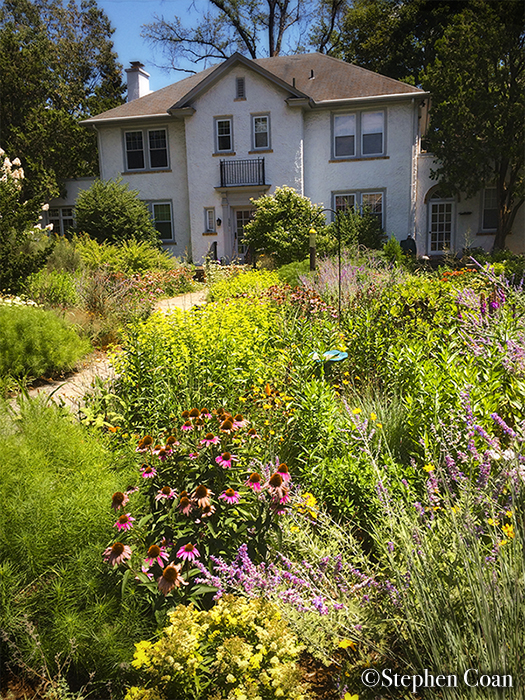

|
|
PRESS RELEASE
Stephen Coan, LLC of Collingswood, NJ
Awarded Best Of Houzz 2018
Over 40 Million Monthly Unique Users Nominated Best Home Building,
Remodeling and Design Professionals in North America and Around the World
Collingswood, NJ, January 17, 2018 – Stephen Coan, LLC of Collingswood, NJ has won “Best Of Customer Service” on Houzz, the leading platform for home remodeling and design. The Landscape Design Firm that creates Nature Inspired Gardens was chosen by the more than 40 million monthly unique users that comprise the Houzz community from among more than one million active home building, remodeling and design industry professionals.
The Best Of Houzz is awarded annually in three categories: Design, Customer Service and Photography. Design award winners’ work was the most popular among the more than 40 million monthly users on Houzz. Customer Service honors are based on several factors, including the number and quality of client reviews a professional received in 2017. Architecture and interior design photographers whose images were most popular are recognized with the Photography award. A “Best Of Houzz 2018” badge will appear on winners’ profiles, as a sign of their commitment to excellence. These badges help homeowners identify popular and top-rated home professionals in every metro area on Houzz.
“I like the idea that the gardens that I create are growing along with nature, and not against it.”
"The Houzz community selected a phenomenal group of Best of Houzz 2018 award winners, so this year's recipients should be very proud,” said Liza Hausman, Vice President of Industry Marketing at Houzz. “Best of Houzz winners represent some of the most talented and customer-focused professionals in our industry, and we are extremely pleased to give them both this recognition and a platform on which to showcase their expertise."
Follow Stephen Coan Garden Design on Houzz
About Stephen Coan
Stephen Coan, of Stephen Coan, LLC – Landscape Design & Consulting, creates nature inspired layered gardens that work together with nature, and not against it using sustainable green ecological practices that are living gardens supporting pollinators and birds with four seasons of interest.
About Houzz
Houzz is the leading platform for home remodeling and design, providing people with everything they need to improve their homes from start to finish – online or from a mobile device. From decorating a small room to building a custom home and everything in between, Houzz connects millions of homeowners, home design enthusiasts and home improvement professionals across the country and around the world. With the largest residential design database in the world and a vibrant community empowered by technology, Houzz is the easiest way for people to find inspiration, get advice, buy products and hire the professionals they need to help turn their ideas into reality. Headquartered in Palo Alto, CA, Houzz also has international offices in London, Berlin, Sydney, Moscow, Tel Aviv and Tokyo. Houzz and the Houzz logo are registered trademarks of Houzz Inc. worldwide. For more information, visit houzz.com.
|
|
 |
|
|
| |
December 26th, 2016
|
|
Turning Collingswood into a Wildlife Sanctuary |
 |



|
|
From a NJ PEN article:
Turning Collingswood into a Wildlife Sanctuary
Landscape designer Stephen Coan says that the borough easily can be certified as an NWF Community Wildlife Habitat if less than 2 percent of its households create wildlife sanctuaries on their properties.
By Abby Schreiber | December 26, 2016

Perennials at Ferret Hollow Gardens. Credit: Stephen Coan.
There are 6,300 households in Collingswood.
If as few as 100 backyards and four community plots can be designated as wildlife habitats, the borough itself could become a certified wildlife sanctuary; only the third in New Jersey.
That’s the vision of resident Stephen Coan, who is leading the charge to have Collingswood become a National Wildlife Federation (NWF) Certified Community Wildlife Habitat.
Coan, a landscape designer, moved to Collingswood in 2003; about five years later, he learned about designated wildlife habitats and realized, “I was more than qualified to get it done.”
With a lawn almost exclusively made up of native plants, including perennials that provide shelter for various creatures throughout the year, Coan’s yard fulfills each of the four requirements of the NWF Garden For Wildlife program.
“You need to provide food, water, shelter, and a place [for wildlife] to bear their young.” he said.
Although the property, which Coan has dubbed Ferret Hollow Gardens, is complex and thoughtfully arranged, an NWF-certified habitat can be constructed anywhere, from a modest backyard to an apartment patio.

Koi pond at Ferret Hollow Gardens. Credit: Stephen Coan.
Habitats are made by intertwining different elements that support the sheltering and breeding of native species of insects, birds, and other small creatures.
Add in a source of running water, like a bird bath or koi pond, and food—bird feeders or berry bushes are simple solutions—and that’s it.
“You could have a few native plants, a bird bath, and a bird feeder on the back patio of your apartment and become [a designated wildlife habitat],” Coan said.
NWF certification “provides a platform for our communities to address important issues like creating corridors for wildlife, stormwater pollution, drought, pollinator decline, and invasive species,” the organization notes on its website. Certification can also open the door to deeper conversations about sustainability and help reverse some of the damage done to animal habitats by human development, according to the NWF.
One of the best ways to sustain wildlife is to cut back on turf grass, which Coan said is labor-, energy-, and chemical-intensive, feeds very few creatures, and provides almost no shelter for them. Annuals in general, are also too labor-intensive, he said.
Coan cultivates mostly native or beneficial plants and flowers at Ferret Hollow Gardens, and virtually no turf grass. He opens the habitat to tours by appointment, which he said showcases the possibilities for creating a wildlife sanctuary.

Birdhouses at Ferret Hollow Gardens. Credit: Stephen Coan.
Coan hopes that by showing people how easily it can be done, more will take up the challenge, and contribute to helping Collingswood reach NWF-certified Community Wildlife Habitat status.
Fewer than 100 communities in the United States have done so, but Coan thinks the only thing holding the borough back is broader awareness of the opportunity to try.
“The less people we have to do this, the less habitat we have,” he said.
“Don’t be afraid. It’s easy to do. And I can help.”
|
|
 |
|
|
| |
July 19th, 2015
|
|
Echinacea (Coneflower) Aster Yellows Disease |
 |
|
|
 |
|
|
 |
|
|
 |
|
|
| |
April 16th, 2013
|
|
The Plant! Indescribable! Indestructible! Nothing Can Stop It! |
 |



|
|
The Plant – Indescribable… Indestructible! Nothing Can Stop It! or: Invasive Plants – the ruin of America’s natural history and identity. or: What not to plant.
Invasive plants and organisms are one of the greatest threats facing our natural ecosystems in the United States. They are destroying America’s natural history, native plant communities, and national identity. We as a society that likes and needs to have plants in our home and office landscapes are an unwitting accomplice to the takeover by these invading alien species.
It’s like the Invasion of the Body Snatchers. We use plants that look like they belong here, why else would that Garden Center be carrying a particular plant - money, but when we plant them they can take over, reproduce, spread their seed, and crowd out the native plant communities that are so important to the biodiversity in our landscape. A plant food web chain so to speak.
Over millennia species have evolved to coexist together and be dependent upon each other for food, shelter, and places to bear their young. When a plant like the Multiflora Rose, Rosa multiflora, is brought in from Japan as an under-stock plant it was spread throughout the country by Us planting them for different purposes and then by the birds eating and then spreading the seeds in their droppings. This invasive plant outcompetes the native plant community, crowding them out forming dense thickets many feet tall, I’ve seen and experienced large thickets on the edge of woods that are over six feet tall and full of eviscerating thorns. A nasty experience if one fell into a patch.
Doug Tallomy, a Professor & Chair of Entomology and Wildlife Ecology in the Department of Entomology and Wildlife Ecology at the University of Delaware in Newark, Delaware has written the book “Bringing Nature Home” revised and updated in 2009. This is the treatise to use in correctly creating a biodiversity of plants that are beneficial to all native species from caterpillars, to butterflies, to birds and all of the beneficial insects. Reading it is a real eye opener but a good guide as to what are the most beneficial plants out there. For example an Oak, Quercus sp., can feed at least 534 species of Lepidoptera – Butterflies and Moths. His research has shown that a native plant/tree can provide over 35 times more insect bio-mass than can alien species of plants. This means that there is 35 times more insect food for baby birds with natives than with alien plants.
Most insects are completely dependent upon specific native plants for food. They have developed to be only able to eat certain species of plants. Without that particular plant food source they will not be able to eat, reproduce, and thrive. As a result the food chain is interrupted and greatly diminished. Larger creatures depend upon the insects to feed their young. For instance birds feed their young a diet almost entirely consisting of insects. If the plant food for the insect is gone then the insect food for the baby birds is therefore gone and so on.
The Nature Conservancy states: “Invasive species damage the lands and waters that native plants and animals need to survive. They hurt economies and threaten human well-being. The estimated damage from invasive species worldwide totals more than $1.4 trillion – five percent of the global economy.” This is a real (scary) number. If left unchecked we as a society are in for some problems.
Now this does not mean that all plants that have been imported into this country are invasive, quite the contrary. Most are not invasive and are friendly to their neighbors. Some even have some beneficial attributes to the native fauna but they as a whole do not have the ability to provide food to the beneficial insects like native plants can. So please try NOT to use plants that are considered an invasive species and beware of plants that are on the watch list.
INVASIVE PLANT LIST: (a very small partial list of plants commonly found in garden centers and in our gardens– in no particular order)
- Japanese Barberry - Berberis thunbergii
- Purple Loostrife – Lythrum salicaria
- Multiflora Rose – Rosa multiflora
- Norway Maple – Acer platanoides
- Garlic Mustard – Alliaria petiolata
- English Ivy – Hedera helix
- Boston Ivy – Parthenocissus tricuspidata
- Japanese Honeysuckle – Loniceria japonica
- Burning Bush – Euonymus alatus
- Winter Creeper – Euonymus fortunei
- Common Periwinkle – Vinca minor
- Chinese Wisteria – Wisteria sinensis
- Chinese Silvergrass – Miscanthus sinensis
- Golden Bamboo – Phyllostachys aurea
- Butterfly Bush – Buddleia davidii
- Japanese Spirea – Spirea japonica
For more information please take a look at my Invasive Plants Information section and my Native Plant Information section in the “Resources” section of my website.
I’m Stephen Coan, of Stephen Coan LLC at Ferret Hollow Gardens, an ecological landscape designer and ornamental horticulturist certified by Longwood Gardens.
I create beautiful and ecologically friendly landscapes and gardens.
Stephen Coan
Stephen Coan, LLC - Landscape Design & Consulting
Located at Ferret Hollow Gardens
Ecological Landscape Design, Consulting, Installation
267-251-5855
info@ferrethollow.com
www.ferrethollowgardens.com
http://www.stephencoan.com/blog/
http://stephencoanllcatferrethollowgardens.brandyourself.com |
|
 |
|
|
| |
March 29th, 2013
|
|
Now is the time to start your new gardens. |
 |

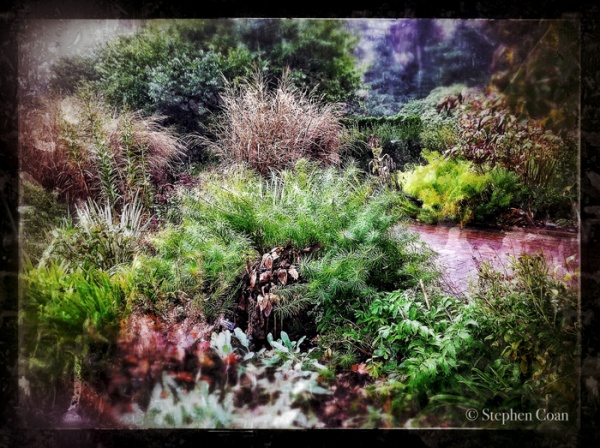

|
|
a beautiful rainy day at Longwood Gardens
Now is the time to start your new gardens or: How I Learned to Stop Worrying and Love the Garden.
Hi all, It’s been a long and cool winter. Spring has sprung – sort of – and we’re all starting to come out of hibernation. In fact my chipmunks had made their first appearance last Sunday scurrying around looking for fresh food that I amply supplied them. We on the other hand are looking at our yards and thinking – uggh, I have to clean up after the long slow winter. (see the bottom of this post for its time to…)
Before you begin you have to decide what you want to do this year with your gardens and landscapes. Do I just do a little cleanup and let it do what it may? Do I plant a couple of new plants? Do I switch from the chemical fertilizers to natural fertilizers? Do I use sustainable green planting practices? Do I need to replace some plants/shrubs/trees? Do I plan a new planting bed? Do I need to do a complete overhaul? And for you new homeowners: Do I plant a new garden landscape around my property? If you do want to plant new beds: Do I want an environmentally friendly garden? Do I want to add a pond or water feature this year? Do I want to attract butterflies? Do I want to attract birds? - My property is designated as a certified wildlife habitat garden. I bring in about 33 different birds throughout the year plus the migratory birds from Red-Bellied Woodpeckers to American Goldfinches that I feed year round. For a list of the birds: http://ferrethollow.com/index2.php#/rtext_4/2/
All of these questions need to be addressed plus many more if you decide that now is the time. You can do it yourself with a lot of research or bring in a professional to consult with or design it for you and/or install it for you.
I would start with the basics and decide if now is the time and then figure out what you want to accomplish now and over time. Then decide if you have enough time to devote to your project if you want to go it alone. There is a lot of information that you need about plant communities and putting in the right plant in the right place – this is where many of the problems start, wrong plant, wrong place. I would then decide if you want to do this yourself or bring in a professional on just a portion of, or on the entire project.
One very important item is to figure out a budget for your project. It is far better to come up with a plan that you want to accomplish and then install is over a period of time/years using persons that really know what they are doing than to hire an all in one contractor/landscaper that gives you the lowest and cheapest price. You get what you pay for.
As a trained and certified landscape designer and ornamental horticulturist I would highly recommend using mostly perennial plants that are native to North America in general and then use a smaller portion of plants that originally come from foreign lands. I only use a couple or three annuals. One of my favorite sayings is “Friends don’t let friends buy annuals.”
Annuals are the ultimate in unsustainable planting practices. They have to be regrown every year from seed/cuttings/tissue culture by the grower in distant places using a lot of energy. They then have to be shipped to the store using a lot of fuel. You then have to drive to the store and then back and then you have to plant them again each and every year costing you time, money, and energy. This is an unsustainable planting practice. I highly recommend using perennials. They are grown, shipped, bought, and planted once and can last for many years – Sustainable and cost effective. However I do use the occasional annual plant to fill very specific needs that can only be achieved with that particular annual.
Typically if you want to landscape your entire property the recommend practice is to budget approximately 15% of the value of the property into the garden and landscape. This might sound like a lot of money but if you think about it you spend a lot of money in building, rehabbing, upgrading, etc on the home itself. The surrounding land that you have is an extension of the home, office, institution, etc and can be used as such and is just as important. Imagine a garden “room” in which you can sit with family and friends and enjoy a meal cooked at your outdoor kitchen and then sitting by the pond watching the dragonflies darting across the waters as your koi jump out trying for a meal. I digress, but you get the point. The landscape is an extension of the home in which you can have “rooms” to lounge around in front of the firepit on a cool summer night watching the shooting stars or… there I go again.
A new home on a barren lot just doesn’t look good and devalues the property. Or even an established home with a badly done or unsustainable garden and landscape can take away from the beauty of our homes and sanctuaries. This also includes having just a few evergreen shrubs planted around your homes foundation. However a well-done landscape increases property value and gives you a sanctuary in your yard to relax in and enjoy throughout the years.
I’m planning on doing a series of landscape design issues over the coming weeks and months to help you get through the “ordeal” of proper planting and landscaping. If you should have any questions or topics that you would like to have addressed please feel free to comment or send me an email and if appropriate I will address in an upcoming post.
Now is the time to:
Now is the time to do the yard cleanup before any more of the plants shoot up out of the ground.
Make all of your pruning on plants that bloom on new growth. If you see flower buds do not cut – wait until after blooming. This means that they set their buds on last years growth.
Cut down all ornamental grasses, just not the carex’s that are evergreen. I do not cut down the Ophiopogon planiscapus 'Nigrescens' - Black Mondo Grass –ever – I only pull out the browned blades one at a time if there are any at all that died over the winter.
Make up your plans for the upcoming planting season.
Look into using leaf compost for adding to your planting beds. Many towns now have the compost available to the townsfolk if they collect the leaves in the fall. Check with your town hall.
Go to the stores and pick up the summer flowering/growing bulbs now before all of the good or unusual ones are gone.
I’m Stephen Coan, of Stephen Coan LLC at Ferret Hollow Gardens, an ecological landscape designer and ornamental horticulturist certified by Longwood Gardens.
I create beautiful and ecologically friendly landscapes and gardens.
Stephen Coan
Stephen Coan LLC at Ferret Hollow Gardens
Ecological Landscape Design, Consulting, Installation
267-251-5855
info@ferrethollow.com
www.ferrethollowgardens.com
http://www.stephencoan.com/blog/
http://stephencoanllcatferrethollowgardens.brandyourself.com |
|
 |
|
|
| |
December 23rd, 2012
|
|
Landscape Design Tips - Solar Lighting |
 |

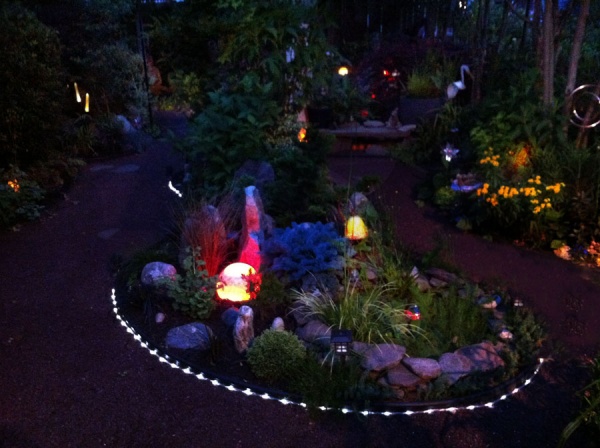

|
|
Outdoor Landscape Lighting - The shortest days and longest nights of the year are here. How are You going to see in the dark?
Over the past season I have been doing an informal study on solar lighting for gardens and landscapes. The idea of having a sustainable light source that uses no exterior energy source sounds good but according to my findings solar lights are just not ready yet as a viable outdoor lighting source.
In the spring I had purchased a number of different types of solar lights made by different companies, some cheap and some expensive to test out myself so that I could recommend them in my landscape designs and consulting to my friends and clients equally to or instead of low voltage electric lighting. I already had a low-voltage lighting system that I had designed, built, and installed to great effect but I wanted to see if the promise of an off the grid system was feasible for both decorative and functional purposes.
The function of a solar light is to gather energy from the sun, temporarily store that energy, and then use that energy to power a light bulb that night. A solar light has a solar panel that gathers the sunlight during the day that is turned into energy and stored in batteries and then that stored energy is used as the energy source by the light bulb that same night.
The advantage of landscape low voltage lighting is that you can put them anywhere, as long as you can burry the wires for them, and have them on a timer to turn off and on at will; you can even have different zones lighted up at different times on the property. The promise of solar lighting is a bit different. Theoretically you can put them anywhere in the landscape and you don’t have to worry about the wiring but you have to consider that they will only work in areas that receive sunlight. Currently they turn themselves on as soon as it is dark enough and will last as long as the battery has a charge in it, which typically are only a few hours. They must have direct sunlight during most of the day in order for them to work that night. They can’t be placed in shady areas and on cloudy days, and especially on rainy days they will not work that night at all limiting their functionality. Additionally the amount or brightness of the light that they put out is far too low to be considered functional in most applications. Typically you can only see the light itself instead of what it is lighting. It’s like the difference between a 6-watt nightlight compared to a 75-watt reading light. This is a real problem if you need a light or lights to see your driveway or your walkways, which can make it an unsafe area especially in a high traffic area or on the properties of senior citizens. As a result of the shortness, brightness, and amount of needed sunlight I would not recommend them at all for functional lighting in which the need for light is a requirement especially in a safety situation.
However as a decorative light they can be charming. If all you need is a bit of detail or color in your darkened landscape for a few hours after dark they are decent. I would say that the only real use for solar lighting at this point is for decorative purposes. A number of attractive lights are available in a number of different colors from most large hardware stores or garden centers. They can be added to a large planter for some color or in a “black hole” in the nightscape. Or they can be grouped together ornamentally in the garden for an interesting effect. The imagination is the limit – also so is the amount of sunlight it gets during the day.
I still would recommend low voltage lighting for this purpose at this point in time. The solar light technology is just not ready for usage in the different applications. There might be some company that is making a better product but I have yet to see or hear about it. If that does happen and the technology makes a useful advancement then I will post that information.
One possibility is that for those that have a solar panel system on their roofs in order to get them off the power grid somewhat then you could tie the outdoor landscape lights into that source but you would still have to use a low voltage lighting system to make use of the stored energy.
Now that I have used the solar lights for a full season and have personally seen their shortcomings and issues I am planning on converting all of my favorite solar lights into low voltage lighting for next year.
So in conclusion I would not recommend solar lighting at all for safety or functional purposes and still would not use them for decorative lighting myself – too limiting.
For other landscape design, wildlife habitat, native plant, or gardening tips and ideas take a look at my website for Ferret Hollow Gardens, a certified wildlife habitat, www.ferrethollowgardens.com
I’m Stephen Coan, I exclusively provide landscape design, garden design, plant lists, consulting, and project management services for public, residential, commercial, and wildlife habitat projects using sustainable green practices with a combination of native and ornamental plant species that are site appropriate for the conditions.
Happy Holidays |
|
 |
|
|
| |
December 11th, 2012
|
|
Spring Bulb Planting Time |
 |



|
|
Tulip Beds at Longwood Gardens - Spring 2012
In case you haven't done so already, now is the time to plant those spring flowering bulbs.
The best time is usually after Thanksgiving when the soil temperature is at or below 45º. In doing so, the newly planted bulb will not put any of its stored energy into producing any green foliage, but instead will only produce some roots if it chooses to start to grow while the temperatures aren't too low.
If bulbs are planted sooner while the soil temperature is warmer, they have a strong chance of using some of their precious stored energy producing some foliage that will die off from the cold temperatures before there is enough time to produce flowers for reproduction.
Then, in the spring, when the temp rises and it begins to grow, there is that much less stored energy for the bulb to produce its roots, foliage, and flower, which can result in a smaller or a less healthy plant that growing season.
Please read the instructions as to the proper planting depth for your type of bulb and don't forget to use some of that good compost that you made this year.
For information on landscape design, wildlife habitats, and horticulture please visit my website, www.ferrethollowgardens.com |
|
 |
|
|
 |
|
|
| |
December 6th, 2012
|
|
Toad Lilies - a late season bloomer |
 |



|
|
Still Blooming as of 12/5/2012 - Tricyrtis formosana
Toad Lilies make a great, late-season, blooming landscape design plant choice.
This group of perennial plants, genus Tricyrtis, produces a very long season of blooming, starting in the late summer, that can last into December depending on species, form, variety, or cultivar.
It produces many small, orchid-like flowers, either along the entire stem or at the end of the stem, and can have either solid or variegated leaves, again depending upon the type in green, white, or yellow/chartreuse. As a landscape designer, this is my favorite perennial shade plant. They can take some sun, but usually not full sun, and do quite well in open shade. I have many different types and am always on the lookout for new or unusual ones. They are best planted near a walkway, patio, or, for the smaller ones, in a container to better see and appreciate the details of the small flowers. As of December 5, 2012, I have three different Toads that are still blooming. Most have already finished for the season. Zones: 4-9
Light requirements: part sun, shade
Soil: moist fertile soil
Sizes: varies from 6" to 4' tall; some can spread out into a 3' wide patch over time.
Found in: better garden centers and nurseries. |
|
 |
|
|
 |
|
|
 |
|
|
 |
|
|
 |
|
|
 |
|
|
| |
November 24th, 2012
|
|
Fall Leaf Mulching |
 |
|
|
 |
|
|
| |
May 16th, 2012
|
|
Ferret Hollow Gardens Spring 2012 Garden Tour |
 |



|
Hi all. It's that time of the year again. The birds are chirpin. The fish, Koi, are swimmin, the chipmunks are just havin a good ol' time, and the plants are a growin. Yup that's right, it's spring-time and time for the annual Collingswood Proud Neighbors Porch Brunch, House, and Garden Tour. My Garden, Ferret Hollow Gardens is on the tour this year. It's full of native and ornamental plant species, many of which support the native wildlife especially pollenators. It is always a lot of fun to meet all of the hundreds of people that come through and a nice way to spend a lazy Sunday afternoon. Come on over to Ferret Hollow and see the gardens in full swing. The perennials are a few weeks early this year as with most other plants this year - the warm winter. There will be a few surprises in the garden. I'll have a lot of information for interested people/gardeners so just ask. Keep your eye out for the Queen Chipmunk of Ferret Hollow - Emma - who lives behind the waterfall and for the others, Stella, Mina, and Lena. Stella and Mina are showing signs of having pups and eating a lot. Lena, new last year, just started to eat out of my hands today - finally. Stella and Emma have been doing it for a few years. The tour is on Sunday, May 20. Porch Brunch at 11am and the House and Garden tour at 12 noon till 5:30 pm. Ferret Hollow Gardens will be open at 11am
Call or email me, Stephen Coan, if you should have any questions.
For more information click here: Collingswood Porch Brunch, House, and Garden TourStop on by and mention that you read about the tour on my blog.
Ferret Hollow Gardens is located in Collingswood, NJ. For information: Ferret Hollow Garden Tours.
Tours are available throughout the year by appointment only.
Update: Wednesday Morning, May 16.
Well folks, we survived the thunder storms and heavy rains of last night. The garden will be that much fuller come Sunday. One word about finding Ferret Hollow Gardens - It seems that Google Maps and Google Places has screwed up and have deleted the listing for Ferret Hollow - very frustrating I must say - some kind of double entry for two different places, so instead of fixing it they just deleted it. If you need directions you can still go to google maps but you have to put in the address instead of the name: 131 Lawnside Avenue, Collingswood, NJ 08108
In researching the problem I found that the deletion or mixing is a common problem but Google is poorly set up to correct the issues and can take up to 6 to 8 weeks to correct the problems. This leaves companies and places without their listings on Google which could be a major problem for business. I'd appreciate it if people would go onto Google Places and recommend/share Ferret Hollow Gardens. It might help resolve the issue and put the Garden back on the Map. Thanks. S |
|
 |
|
|
| |
April 18th, 2012
|
|
Fuji Matsuri or the Wisteria Festival |
 |



|
Just in time for this beautiful spring comes the Japanese Wisteria Festival, Fuji Matsuri. After all of the cherry blossoms have fallen from the Cherry Blossom Festival, Sakura Matsuri, this years spring is an exception, comes the blooming of the wisteria vine. If you haven't seen them yet just look around for the purple, pink, or white covered shrub/vine. They are a vine that you can slowly train to be a shrub. I saw the first one blooming two weeks ago on my twice a week journey to Longwood Gardens on Rt 322 just north of I 95 on the right hand side covering a tree. It was a few weeks early this year as with most other spring blooming plants. The general word at the Garden is that we are about three to four weeks early this year - nice weather, but are having a very dry season which if it keeps up could lead to a few problems later on in the growing season. Keep an eye on your gardens for dryness - put a thich layer of compost down - two inches a year is ideal, then add a layer of mulch to retain the moisture. I use both ground hardwood mulch and finely ground leaf mulch in different garden areas and at different times of the year. This is a very good sustainable practice to follow in your gardens. The idea is to keep all of your soil covered. A soil exposed to the sun quickly looses its very important biological contents - beneficial fungi, molds, nematodes, arthropods, etc., dries out, sterilizes, and allows "weeds" to take hold. I call this worn out soil - dirt. It won't allow much to grow in its depleted form and would require ammendments to bring it back to a healthy growing condition. I came across a site today by "stomaster" of the Kawachi Fuji Garden in Japan with some spectacular photographs of wisteria tunnels. It's a bit slow loading due to the size of the photos but WELL worth the wait. Just imagine walking down the long tunnels with the smell of wisteria on a nice sunny day - mmmmmm. One of my suppliers has it growing all over his outside open office acting as a wall on one side and hanging down on two other sides - very nice. |
|
 |
|
|
| |
April 11th, 2012
|
|
Dwarf and Miniature Conifer Garden |
 |
|
|
 |
|
|
| |
April 1st, 2012
|
|
Your Friendly Butterfly and Honey Bee Garden, or Creating a Pollinator-Attracting Garden |
 |
|
|
 |
|
|
 |



|
|
Butterfly Weed, Asclepias tuberosa.
Hello South Jersey, I don't know about your way of thinking but I like to design gardens that attract pollinators–butterflies, bees, hummingbirds, etc. In doing so we help the plant, insect and animal worlds and create a sustainable environment for them to live and grow and for us to enjoy. Most flowers and plants need to be pollinated by bees and butterflies, in order to reproduce, survive, or produce their fruit, vegetables, and future flowers. Over the years we, man, have reduced the amount of natural areas through development leaving less and less diversity and habitat for the birds and the bees to live in. I like to provide a diversity of native and pollinating plants that look great and are good for nature.
Two recent studies of the dangerous worldwide decline of bee population were published Thursday in the journal Science. They link the use of a common type of pesticide class known as neonicotinoids, used on our food supply crops, to the decline in bee population. "Virtually all corn grown in the United States is treated with them," according to the studies. The studies found that crops requiring the use of bees to pollinate them, i.e. bees feeding on their nectar, are harmful to the bees due to the chemicals being present in the nectar and then causing harm to the bee. This worldwide decline in bee population could have some significant repercussions for us if left unchecked. For more information click here.
I'm planning on putting in a few bee hives myself just to help the area flower and plant communities. I myself have noticed a large decline in the bee population on my own property over the last 10 years. I do not use pesticides, instead choosing to use natural means of control. Most bees will not harm you if left alone, meaning don't swat at them. They'll just fly around you briefly but are much more interested in the next nectar-bearing flower. Think of it. How would you react if someone swatted at you?
My thinking is, why not help the environment and make our gardens and landscapes beautiful with the installation of sustainable native and pollinator attracting plants. My property is a designated wildlife habitat that contains the four basic tenents–food, water, shelter, and places to bear their young. I achieved this by the diversity of native and ornamental plants, shrubs, trees and the inclusion of a pond plus a number of other things. (More on this in a later blog post.)
One of my favorite native perennial plants to use is Butterfly Weed, Asclepias tuberosa, zone 3 - 9, full sun, low maintenance, medium to dry conditions, 30" T x 18" W, does well in the tri-state area. It comes in a few different flower colors, orange, my favorite, yellow, and a bi-colored variety or two. The flowers attract butterflies, especially Monarchs and Queens, bees, hummingbirds and various other beneficial insects. If you are lucky you might find a Monarch Caterpillar feeding on it or my favorite yellow or orange aphids on it that eat the nectar which are then fed upon by larval ladybugs.
To me this shows a well balanced garden habitat. Remember, most insects are good and not harmful to us like the bane of many people: the dreaded mosquito. Just make sure you don't have any standing water around your home for the mosquito to grow in, and a copious amount of bats that eat an astonishing number of them.
For other info or inspiration take a look at my blog and website - Ferret Hollow Gardens.
From my Patch Website Blog Posting. |
|
 |
|
|
| |
February 15th, 2012
|
|
New USDA Plant Hardiness Zone Map |
 |



|
The word was out last summer, quietly being passed about, that Longwood Gardens had been elevated to a "Zone 7a" by the USDA. That's right—the global warming that isn't happening, in some circles, is actually happening and we are warming up. The USDA has just published a new 2012 Plant Hardiness Zone Map that is searchable by state and zip code. What was a 6b might now be a 7a. Although some areas just have had some better temp readings done than in the past. Many areas have not been effected to the changes due to their location in the previous map, where they are in relation to dividing lines, and the extent of the somewhat northerly shift. To find out your specific zone location to the new 2012 USDA Plant Hardiness Zone Map check out the link on my website, USDA Plant Hardiness Map. Editor's note: Stephen Coan blogs for Patch sites throughout South Jersey. He is a Collingswood resident.The Patch Posting |
|
 |
|
|
| |
February 14th, 2012
|
|
Vermicomposting |
 |

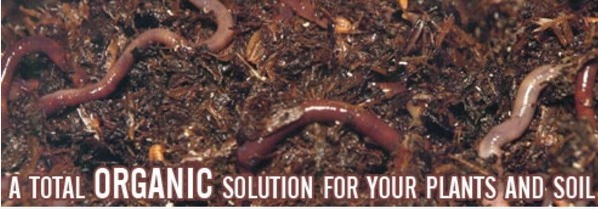

|
Hi all, Today's post is on the practice of vermicomposting which is very well described by Wikipedia as: Wikipedia Vermicomposting link "Vermicompost is the product or process of composting utilizing various species of worms, usually red wigglers, white worms, and earthworms to create a heterogeneous mixture of decomposing vegetable or food waste, bedding materials, and vermicast. Vermicast, similarly known as worm castings, worm humus or worm manure, is the end-product of the breakdown of organic matter by a species of earthworm.[1] Containing water-soluble nutrients, vermicompost is an excellent, nutrient-rich organic fertilizer and soil conditioner.[2] The process of producing vermicompost is called vermicomposting." The use of vermicompost is quite useful for a well balanced nutrient rich soil for gardens and plantings. It has an already established beneficial biological content, bacteria, fungi, mold, nematodes, etc. that your plants will thrive on and with a good quality one it could control soil pathogens. A very good video to watch describing the process and benefits for those who are interested is: vermicomposting video A small composting set up can be achieved in your own home/kitchen. You just need a container, worms, and the proper ingredients. Take a look at the Wikipedia link above for a basic recipe. There are a number of worm sources online and one somewhat locally but I don't want to favor one over the other, although I have been told by plant pathology sources at Longwood Gardens that a good commercial producer of Vermicompost is "Worm Power." For other topic information take a look at my Garden Blog and my Ferret Hollow Gardens website. The Patch Posting |
|
 |
|
|
| |
February 8th, 2012
|
|
The Patch Blog |
 |



|
|
Earlier this year I started to blog for the "Patch" website in eight towns covering all of South Jersey. Here is the first one: Patch
I look forward to having the Ferret Hollow Gardens Blog added to the Patch. I'll be adding posts regarding garden, green and sustainable practices, and environmental issues, ideas, information, questions, and answers. Please feel free to ask gardening questions and I'll do my best to answer. I'll link this to my other blog when the address is updated in a couple of weeks. For the time being you can reach it at: The Ferret Hollow Gardens - The Blog
To start off with here are a few ideas. 1. Due to the warm winter season many plants are already starting to wake up and grow. It's time to cut down your Liriope and other perennials before the new shoots emerge. 2. Consider going totally green this year. Instead of chemical fertilizers try using compost tea, leaf mold/mulch, compost, worm castings and other Natural soil ammendments. This would also go for turf grass lawns. More at a later date. 3. Start sewing seeds indoors by the end of the month for a jump start in the spring. 4. Prune your shrubs and trees that bloom on new growth this year. Wait until after blooming for shrubs and trees that bloom on last year's bud set. 5. Feed your local wildlife. This is the hard part of the winter when fresh food sources are scarce. I put out bird food and wildlife food mixed with berries-grapes and cherries. A good suet is also appreciated by the birds that don't eat seed. I have also included a photo of Emma, the Queen Chipmunk of Ferret Hollow Gardens taken last year in August. She is a bit chunky - pregnant. Check out my blog for other images and videos of her, Stella, and the other chipmunks, Fauna, and Flora.
|
|
 |
|
|
| |
January 26th, 2012
|
|
Hellebores |
 |
|
|
 |
|
|
| |
January 18th, 2012
|
|
Gardens Wanted for the 2012 Porch Brunch, House, and Garden Tour |
 |



|
|
Do you have or know of a Collingswood, NJ "Green," "Sustainable," "Rain Garden," "Environmentally Friendly," "Xeriscaped," "Native Planted," "Butterfly," "Pollinator," "Certified Wildlife Habitat," or just a Great Garden then the Proud Neighbors of Collingswood needs you for their Annual Colligswood Porch Brunch, House, and Garden Tour on Sunday, May 20. If you have one or know of one to recommend then please contact me, Stephen Coan, at Ferret Hollow Gardens - a Certified Wildlife Habitat, for more information. www.ferrethollowgardens.com garden@ferrethollow.com, 267-251-5855. |
|
 |
|
|
| |
December 4th, 2011
|
|
Gnome Sighting |
 |
|
|
 |
|
|
| |
November 29th, 2011
|
|
LATE SEASON FLOWERS / LEAF MULCH |
 |



|
|
It's November 29, 2011 and we still have flowers blooming!! It was 70º yesterday and 62º right now. This is a Black-eyed Susan Vine flower that keeps on going. Three other plants are blooming - two different Toad Lilies and an Oxalis. Global warming? - Not happening according to some uneducated persons in the Re... / Longwood Gardens was updated from a Zone 6 to a Zone 7, a warmer planting zone this year due to Global Warming/Climate Change. Enjoy the weather and the very late blooming flowers.
LEAF MULCH:
It's still not to late to make some soil amendments to your gardens. Instead of getting rid of your leaves just grind them up with a leaf blower / mulcher / lawn mower and put the leaf mulch on your garden or just leave on your turf grass. This will give you a nice natural mulch for the winter and into most of next year. The advantage of this is that the leaves break down putting the best fertilizer into your soil. Short story is that it increases nutrients and builds up the good biological content in the soil which helps whatever is planted get NATURAL FERTILIZERS unlike what the Chemical companies want you to think that you need chemical based fertilizers - A BAD THING! More on this at a later date. |
|
 |
|
|
| |
November 19th, 2011
|
|
IPCC: Climate impact risk set to increase |
 |
|
|
 |
|
|
| |
August 23rd, 2011
|
|
Toad Lily - Tricyrtis formosana 'Samurai' |
 |



|
|
Toad Lilies or Tricertis have been one of my favorite late summer / fall flowering perennials. The one above is a purple flowering variety with a yellow edge on the green leaves. I have one Samurai that produced a true blue flower last year, hopefully it will be the same this year, maybe I'll see next week. Toad Lilies produce small delicate orchid-like flowers in a variety of cool colours with a few yellow ones, many have dark spots or markings on them. Most varieties have a solid green leaf but I find that I am most interested in ones with varigated leaves giving a bit more interest to the shade garden. I have a number of varieties that started to bloom last week and should keep on blooming until near the end of October maybe into November depending upon the seasons weather progression.
Zones 6 - 8, some varieties might survive in a protected zone 5 area. / Dry to moist soil / part sun to shade. / Medium growth rate. / Blooms in late Summer to Fall. |
|
 |
|
|
| |
August 10th, 2011
|
|
Lyme Disease |
 |



|
|
For those who are unaware, Lyme Disease can be contracted in their own back yard. According to Timber Press and Ruth Rogers Clausen "Gardeners and ticks share an affinity for trees, shrubs, lawns, and mulch. And those that live in an area with deer ticks (the Northeast, Midwest, and Northwest) are at risk for contracting Lyme disease. Around 70% of people with Lyme disease are infected in their own yards, making home prevention a priority."
If you think that you might have contacted it please see your Doctor immediately. It is NO laughing matter.
For more information about Lyme Disease here are two links.
Lyme Disease - Wickipedia
Lyme Disease - PubMed Health |
|
 |
|
|
| |
August 9th, 2011
|
|
Pregnant Emma |
 |
|
|
 |



|
This is Emma again, who resides behind the waterfall of the Koi pond. I regularly, but one at a time, hand feed Emma, Stella and the other visting chipmunks. Stella has a shortened tail and lives near the far side of the Koi pond. They both run around me or pause at my feet when I am in the gardens. Today I hand fed her as I usually do except that I hadn't seen her for about a week or so. I think that I have found out why - she is pregnant. Well let me say that she is exceptionally plump around her midsection. I have read that chipmunks have one or two litters a year, in early spring and late summer if the weather (zone) is warm enough. I didn't see her pregnant or have little ones in the spring so I guess that she was playing hard to get. Hopefully I'll see the little ones soon and will post any photos that I am fortunate enough to take. Hopefully she'll trust me with the little ones once they are old enough to feed on solid food. We'll wait and see. |
|
 |
|
|
| |
|
Wheel Bug - Arulus cristatus |
 |
|
|
 |
|
|
| |
June 27th, 2011
|
|
Cicadas |
 |
|
|
|
You know it's summer with the sound of the first cicada. This year NJ and PA are only getting the common ones that are not part of the mass Brood emergences. We get the emergence of the 17 year cicada from Brood II (2) in 2013.
For more info on the Common Cicada.
For more info on the Magicicada, the 13 or 17 year Cicada. |
|
 |
|
|
| |
May 13th, 2011
|
|
The Great Battle of Ferret Hollow - 5/11/2011 |
 |
|
|
|
On the late afternoon of Wednesday May 11, 2011 the Great Battle of Ferret Hollow took place between the Eastern and Western Garden Ant Colonies. It was a large pitched battle with thousands of warriors struggling for control of the garden moving back and forth across the width of the entrance in a tumoltuous melee'. Many were killed and dragged off of the field of battle. It lasted for hours, I had walked into the middle of the conflict and observed it off and on for the duration on the engagement with what appeared to be the victory of the Western Ant Colony. Only time will tell who is the final victor of the war. (Video coming soon) |
|
 |
This site requires flash. Please visit HERE to download the flash player.
|
|
|
|
 |
|
|
| |
April 20th, 2011
|
|
EARTH DAYS |
 |
|
|
|
Nature's peace will flow into you as sunshine flows into trees. - John Muir
There is always music amongst the trees in the garden, but our hearts must be very quiet to hear it. Minnie Aumonier
The best thing one can do when it's raining is to let it rain. - Henry Wadsworth Longfellow |
|
 |
|
|
| |
April 17th, 2011
|
|
GARDEN PARTY & TOUR -SUNDAY, MAY 15 |
 |

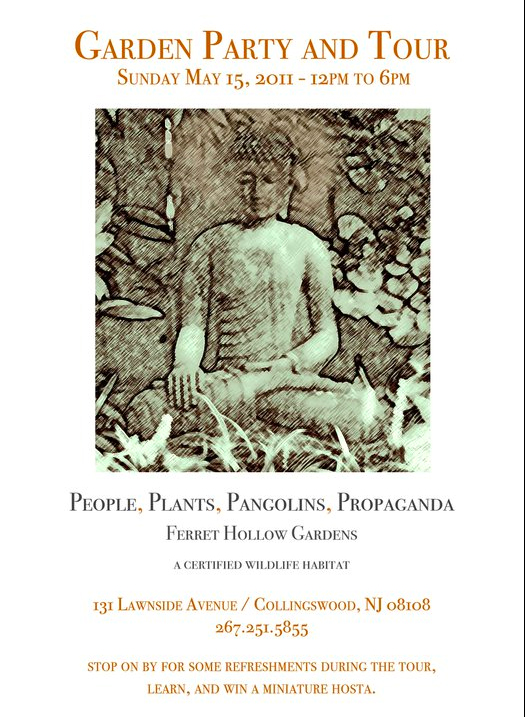

|
|
Hi All,
On Sunday May 15, 2011 12pm - 6pm I am having a garden "party"/tour at my home which has been certified as a wildlife habitat. All are welcome. There is also a porch brunch, house and garden tour going on in Collingswood, NJ that same day, for info: http://www.collingswood.com/living/porch-brunch-and-house-tour
Hope to see you there, call if you have any questions.
Stephen
267.251.5855
garden@stephencoan.com
|
|
 |
|
|
| |
December 30th, 2010
|
|
WInter Fauna Feeding |
 |



|
|
During the winter especially when everything is covered with snow including all of the native food and water sources for the critters that didn't migrate south to Fort Lauderdale it's a good idea to put out and maintain food and water sources. I leave my pond's fountain and waterfall flowing to maintain a source for the animals and birds to wash and drink that also leaves an area unfrozen on the waters surface. My Koi have entered into their winter slow motion "hibernation" at the bottom of the pond "sleeping" until warmer days return. This year I've been leaving out pumkins, gourds and squash in addition to the dried whole corn cobs and a mixture of different seeds and nuts for the different animals to eat. For the birds I make sure that there is a good supply of woodpecker specific suet and a wild seed mix and nuts that attracts many varieties of birds including the predatory hawks that hunt throughout the winter.
In the photo above is a Red-bellied woodpecker and a morning dove with the locally standard red/pink legs. |
|
 |
|
|
| |
June 30th, 2010
|
|
Chippy and the Peanut |
 |
This site requires flash. Please visit HERE to download the flash player.
|
|
Taken 7/2/10. This is the #2 Chippy. |
|
 |
This site requires flash. Please visit HERE to download the flash player.
|
|
|
|
 |
This site requires flash. Please visit HERE to download the flash player.
|
|
A Peanut!!! |
|
 |
This site requires flash. Please visit HERE to download the flash player.
|
|
|
|
 |
This site requires flash. Please visit HERE to download the flash player.
|
|
|
|
 |
This site requires flash. Please visit HERE to download the flash player.
|
|
One of my little guys foraging. Turn up your volume to hear better. |
|
 |
This site requires flash. Please visit HERE to download the flash player.
|
|
|
|
 |
|
|
| |
June 25th, 2010
|
|
Wild Animal Rescue Centers |
 |
|
|
 |
|
|
 |
|
|
| |
June 24th, 2010
|
|
The Sound of the Universe |
 |
|
|
 |



|
|
Scientists have simulated the sounds set to be made by sub-atomic particles such as the Higgs boson when they are produced at the Large Hadron Collider.
Their aim is to develop a means for physicists at Cern to "listen to the data" and pick out the Higgs particle if and when they finally detect it.
(The sounds are amazing and organized)
BBC News Article: http://news.bbc.co.uk/2/hi/science_and_environment/10385675.stm |
|
 |
|
|
| |
June 23rd, 2010
|
|
Wren's flew the coop |
 |

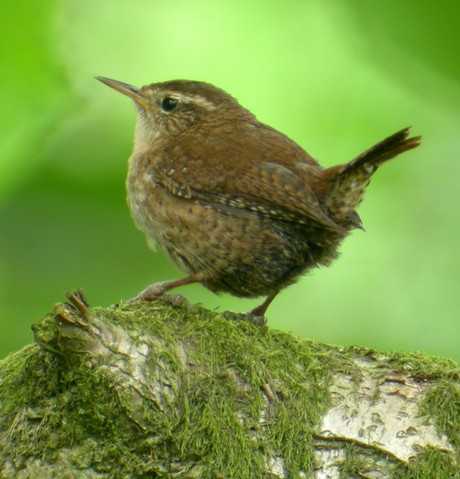

|
|
On Sunday morning my beloved wrens that grew up in the bird house over my pond left the nest. But before they did they said goodbye. The three young ones and their parents all flew down and lined up on the portion of my fence closest to me and just looked at me for a little while to say what I would like to beleive was thank you. They then flew off one at a time and haven't been seen since. It's moments like this that make all of the work worthwhile. This is the fourth year in a row that they have been nesting in the different bird houses in my yard. Wrens are tiny birds that like the smallest opening in their houses to rear their young, a 1.25" opening. They are great insect hunters and are great for keeping those annoying mosquitos at bay. If interested look for simple houses with the 1.25 opening that are made specifically for wrens. It is too small of an opening for most other birds in this area. It protects them from preditory birds and the stalking cats in the neighborhood. They were well used to me being around in the yard and would come right up to me as long as I didn't move too much as they were hunting for insects to feed their young. They have a very distinctive call.
On June 6th I posted the following on my Facebook page:
A perfect morning. The Dead playing, Koi swimmin', Red-Bellied Woodpecker tapping a tune, Juvie-jays being fed, Cat birds guarding the wren nest who were out chasing squirrels, Chipmunks were scurrying, Baby Bunnies were hiding, Cardinals were gliding and the Robins were taking a bidet in my fountain shakin' their butts.
The wrens will be missed until next year.
The photo was found online. Photographer unknown. |
|
 |
|
|
| |
June 20th, 2010
|
|
Hibiscus |
 |



|
|
It's Hibiscus season once again. I plant a number of perennial varieties in my garden that just keep on growing every year. This year I picked up this one, which is zoned for a warmer climate and will have to be brought inside for the winter but is just spectacular with its ruffled edges and alluring colors.
I'm always on the look out for the unusual variety of any given plant species frequently acquiring new cultivars as they come to market in the specialty garden centers. |
|
 |
|
|
 |
|
|
| |
May 27th, 2010
|
|
Viagra of the Day |
 |
|
|
 |
|
|
 |
|
|
 |
|
|
 |
|
|
 |
|
|
| |
|
Todays Viagra Moment: |
 |
|
|
 |
|
|
 |
|
|
| |
May 24th, 2010
|
|
Courier Post Article |
 |
|
|
 |
|
|
| |
May 21st, 2010
|
|
Senior Retirement Community Project |
 |
|
|
 |
|
|
| |
|
Viagra Lili Bloom |
 |



|
Dracunculus vulgaris - Viagra Lili |
|
 |
|
|
| |
May 20th, 2010
|
|
Water Lili |
 |
|
|
 |
|
|
| |
May 17th, 2010
|
|
Garden Tour - May 16, 2010 |
 |



|
|
Thanks for all who came through Ferret Hollow. It was a great sunny day, well over 600 people attended. The hit of the day were the starburst allium, Allium schubertii, that I have been growing for a number of years. Unfortunately two of them didn't make it through the rough winter we had. The pond Koi were busy spawning in the newly 50% water change that cleared it up quite a lot from all of the pollen that was in it. The other hit are all of the Viagra Lilies, Dracunculus vulgaris, that I have spread out around the garden. Their flowers grow to over 2' and I have measured my largest one at 28". Unfurtunately they were not quite ready to bloom. One should be popping in a couple of days. They propogate using fly's instead of the typically used bee's and to attract them they have a slight smell reminiciant of rotting meat for the first day. They are the cousin of the Voodo Lily, Amorphophallus, that has the largest flower in the world growing upwards of 8 feet in its native environment with the plant growing to 15 feet.
Keep your eyes out in the Courior Post for photos and an article on the event.
If you have any questions please feel free to email me using my contact link. |
|
 |
|
|
 |



|
Dracunculus vulgaris - Viagra Lili
|
|
 |
|
|
| |
May 15th, 2010
|
|
Visitor in the Night |
 |
|
|
 |
|
|
| |
May 14th, 2010
|
|
Pond Tea |
 |



|
|
I have been told by a number of other pond owners and dealers that there is a problem with pond water colour this spring, turning into a dark brown tea. In speaking with them we have come up with the probable cause - POLLEN. This spring has had an extraordinary amount of tree pollen in the air - a brownish green color. On some days everything is coated with a thick layer. We generally feel that it should clear up with the end of the tree pollen season pretty soon. One way to lessen the amount of the colour would be to do a water change. I wouldn't do more than about 1/4 - 1/3 of the total volume cleaning the brown residue out as you empty. It's a very good idea to use the run off water to fertilize your garden which is very high in nutrients that plants just love. I use two 25 foot sump pump 2.25" hoses, inexpensive at Home Depot, to reach most of my garden. Remember to add pond salt back into the water all around the edges. It's good for the health of the fish.
My Favorite pond supply is Pond Pro Aquatics in Jobstown, NJ. The owner Don has quite a great setup. They absolutely have the most pond fish that I have yet to encounter. Mostly KOI but also carry a large selection of Comets, Shubunkins, Tadpoles and Snails with a large supply of aquatic plants. The free range Chickens make it an interesting visit. The shop is located on his father Don Sr.'s family farm in the middle of farm country in NJ. A very nice drive out there past horse and goat farms. for information - 609-723-4220 |
|
 |
|
|
 |
|
|
| |
|
Garden Tools |
 |
|
|
|
When buying garden tools make sure to spend the extra money and buy well made preferably forged steel. The tool will last you a long time. Most store bought tools are cheap, poorly made and will break, bend or fall apart when used. My favorite place to get tools is at the best garden center in the entire Philadelphia Tri-State region - Terrain at Styers. Well made hand forged tools are a bit pricey but well worth it. What was the best garden center was bought by the owners of Anthropologie who gave it a do-over turning it into a complete magical experience. It is located in Concordville PA on the corner of Rt 1 and Rt 322. Go and spend an afternoon there, have lunch, shop in the home store, buy all of their top quality stock of plants, pick up planters, fountains, everything that you need for the home landscape except the person to install everything that you couldn't live without. They'll do that too for a fee, so will I. My latest want is a hosta called Fire Island. It is an offshoot of the Red October hosta but has yellow leaves instead of green but has the same red petioles. It is just stunning. None are in at the moment but one is on display in one of their many beautifully planted containers. - off to Ferret Hollow.
The tools that I use most of the time are a forged steel trowel, a Japanese Hori Hori Weeder Knife, a three pronged cultivator claw, good leather gloves, and of course good knee pads. Also a good idea to be wearing glasses or sunglasses for eye protection. You never know when one of the branches are going to make a bee line to your eye when you are least expecting it.
|
|
 |
|
|
| |
May 13th, 2010
|
|
Wintery Ferret Hollow |
 |
|
|
 |
|
|
| |
|
WInter Fauna Feeding |
 |
|
|
 |
|
|
 |
|
|
| |
|
|
 |
|
|




















